Documenting Dermatemys mawii courtship, breeding, and nesting
by Thomas Pop and Jonathan Dubon
Last year, HCRC Manager, Thomas Pop, and Wildlife Fellow, Jonathan Dubon, separately witnessed two amazing events during their daily work at the Hicatee Conservation and Research Center. Tom observed captive Dermatemys mawii (Hicatee turtle) exhibiting courtship behavior and mating and later Jonathan recorded a female Hicatee laying eggs. Both events were firsts for the staff of the HCRC. Tom and Jonathan describe their individual sightings below.
Tom’s Account of D. mawii mating:
During the 3-4th week of October 2021, I observed the following events:
Searching: I noticed that several males were following a single female and thought it might have been to initiate a courtship ritual. I saw the males searching both in the mornings and in the evenings on some days. This caught my attention because Hicatee rarely come to the surface of the water and generally only poke their nostrils out to breathe. I did not see any females searching for a male partner to mate with, but we cannot discard this idea as we do not have enough evidence.
Pre-copulation: Several activities were noted before copulation during this time. I saw that the males would try to get behind the female as if they were trying to pick up on a scent or hormone. The male turtles would then try to bite the female’s tail, as well as her marginal scutes and face. Males were observed shaking their heads from side to side while in front of the female, thereafter, trying to bite the female’s face. Again, I witnessed these activities sometimes in the mornings and evenings. There has not been any evidence of individuals being territorial or aggressive towards each other at the HCRC, including male to male, until this recent observation. The only aggression noticed was between dominant males and a female that may have been ready to mate.
Copulation: I noticed that one of the male turtles would try to jump onto the female turtle when they were a little deeper in the water and hook on. The female would then walk into the shallow water around the edge, so the male’s carapace was out of the water a bit. I used this time to take some photos and videos. I also noticed that before mating, the male would try to drag the female a little deeper into the water as opposed to the shallow edge. Being that this activity happened around the edge of the pond, the turtles made the water very murky by disturbing the dirt present. During this time, I only observed the mating twice. I also noticed that the female involved in the copulation did not seem to want to go deeper in the water. She somewhat preferred to stay around the edge of the pond and seemed stressed.
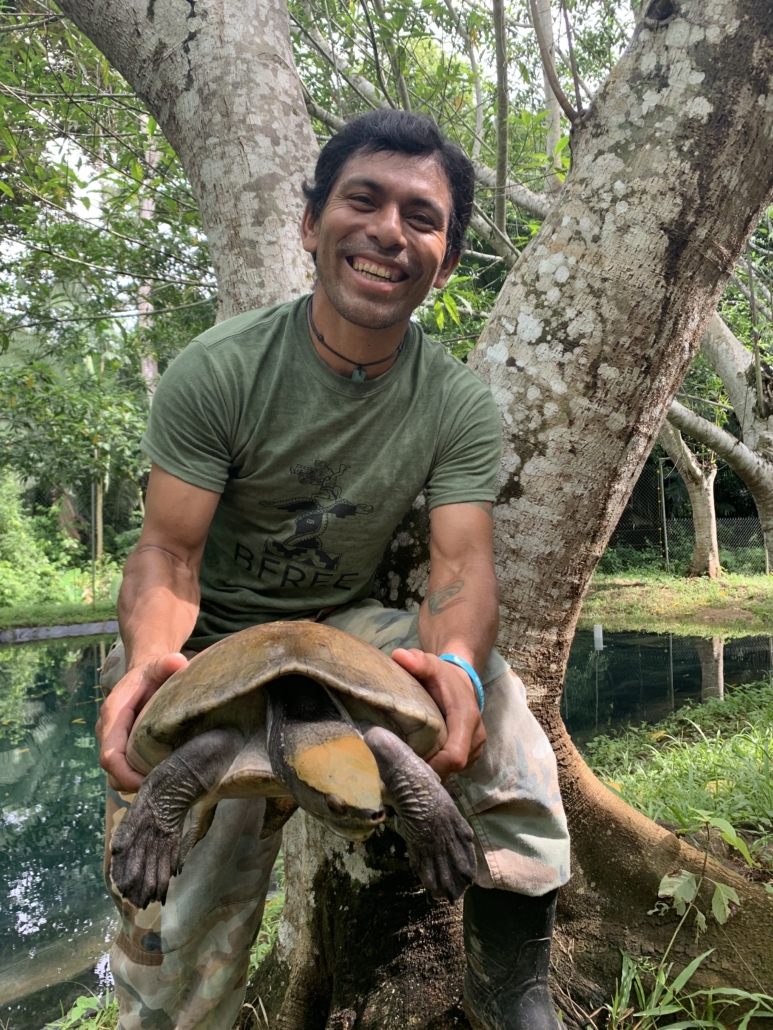
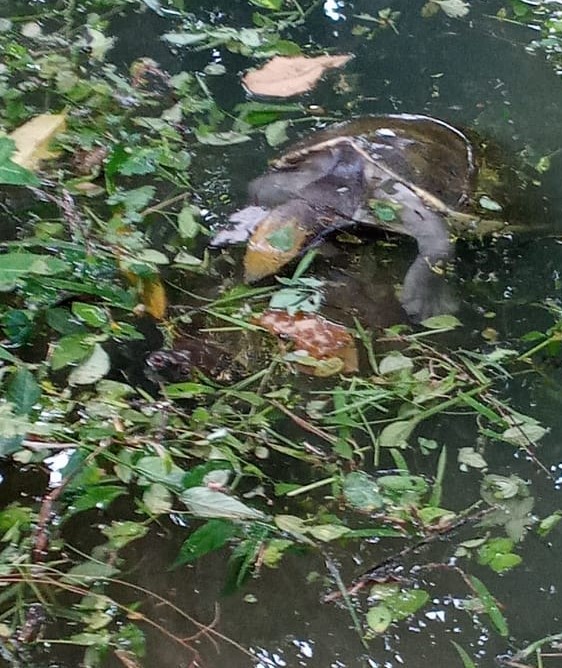
Image Two: Male Hicatee mating with a female Hicatee at the HCRC (photo by Thomas Pop)
Jonathan’s account of D. mawii laying eggs:
On December 22nd, 2021, around 7:30 am, I opened the gate to the HCRC and checked around the breeding ponds for nests that might have been deposited overnight. I was stopped in my tracks when I noticed a female Hicatee on land, digging a nest hole with her hind legs. I stood still and remained quiet so as not scare the turtle. She also remained still, and after about a minute or two, she continued to clear out the nest hole. I carefully snuck up behind her and took out my phone to document the occasion.
At first, I was stooping down but my knees started to ache, so I sat down. After a little while, I laid down a few feet behind her so that I could get some great angles of the event. She continued to remove dirt from the nest hole for 15-20 more minutes. She then laid the first of a total six (6) eggs at around 8:05 am. I noticed that she would place one of her hind legs in the hole when she was laying, to hold and gently lower the egg into the hole. After placing the egg down, she would use her hind legs, switching between the two, to move the egg around and gently set it in place. She repeated these actions in the same way for all six eggs. By 8:30 am, approximately 25 minutes later, she was finished laying.
After setting the final egg in place, she then began to pull dirt with her hind legs from around the hole to cover it. It took her around seven minutes to cover the nest with dirt while slightly compacting it. After covering up the nest, she slowly turned around and made her way back into the water, at the 8:37 am mark.
To my surprise, she did not seem bothered by my presence. I do know that some sea turtles allow you to observe and even touch them while they are laying eggs, but I was not sure if Hicatee turtles would do the same. I did not want to risk scaring her, so I played it safe and tried to remain invisible and quiet throughout the activity.
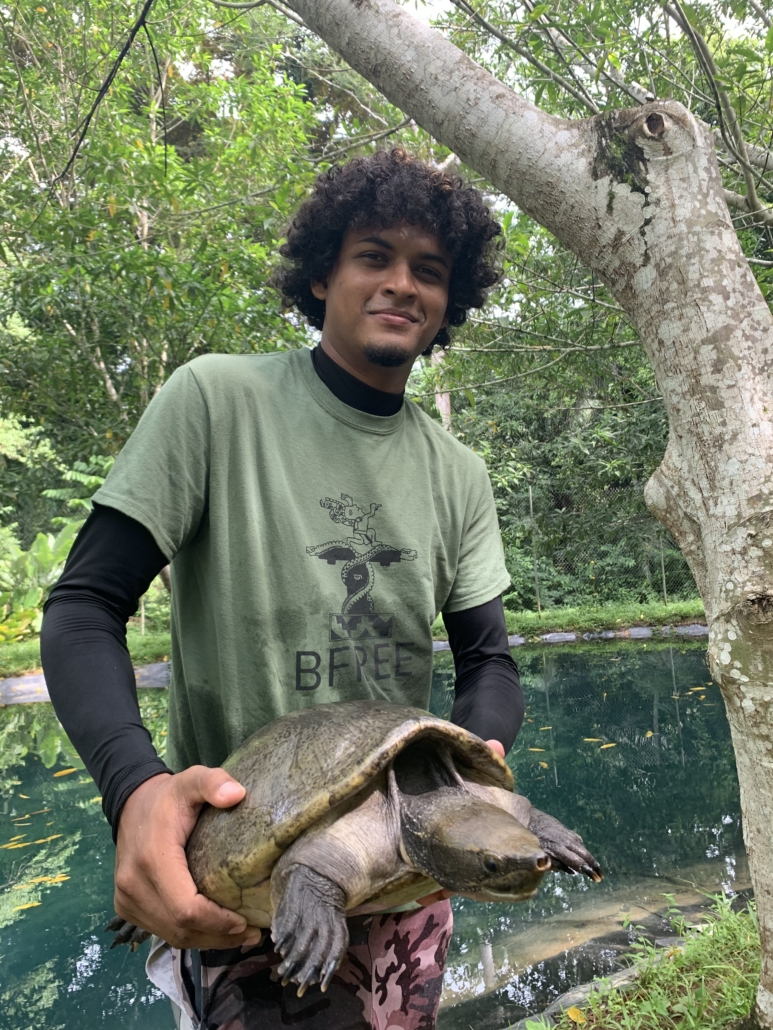
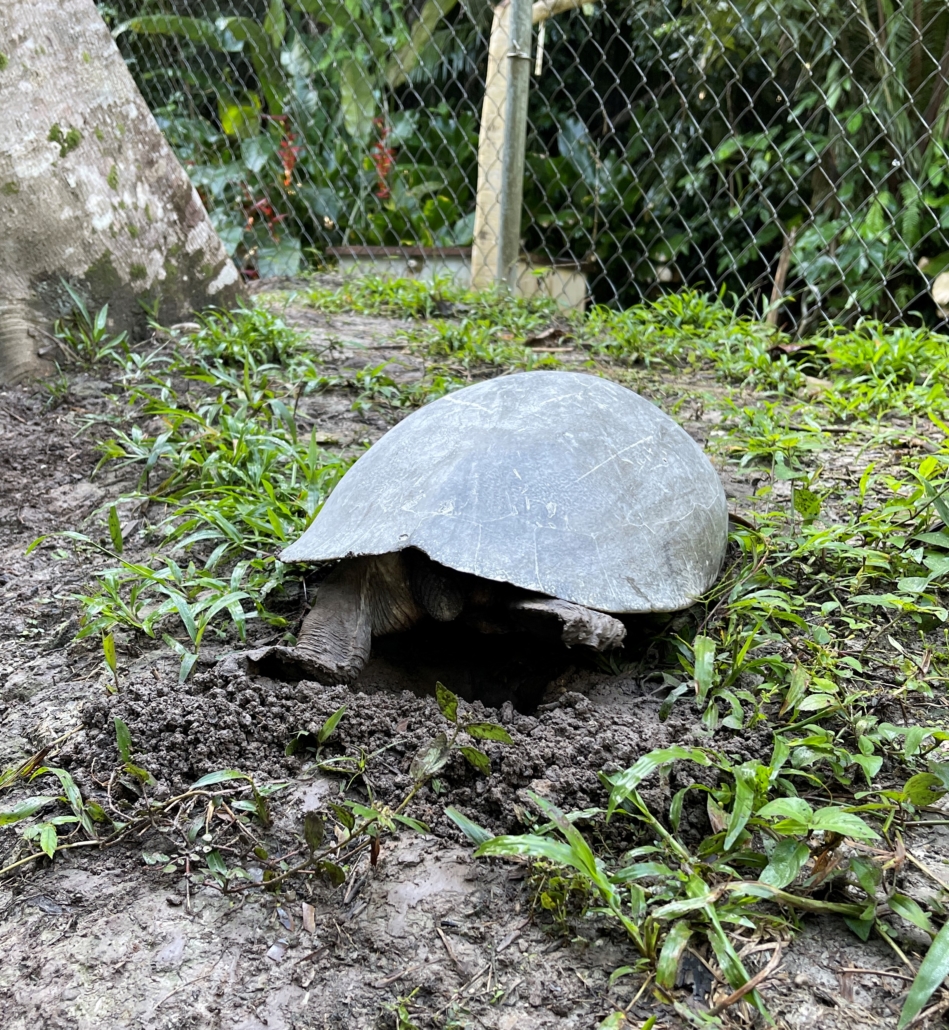
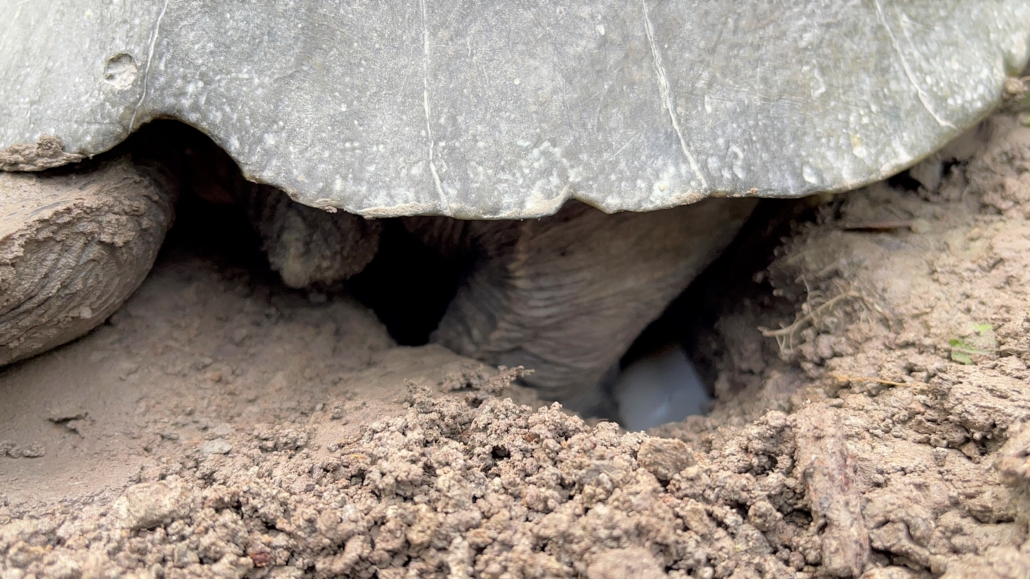
Image Two: Female Hicatee at the HCRC digging a nest hole. (photo by Jonathan Dubon)
Image Three: Female Hicatee depositing egg into the nest. (photo by Jonathan Dubon)
Why these observations are important:
BFREE Executive Director, Jacob Marlin, was very impressed by the incredible observation and documentation skills of Tom and Jonathan. He stated, “The documentation of courtship, breeding and nesting demonstrates one of the many benefits of developing the HCRC. This species has very secretive habits and barely comes out of the water, even to nest. These events have never been documented in the wild and without the Hicatee Conservation and Research Center and its dedicated staff, this incredible behavior would likely continue to elude science.”
Watch a short video of the events described by Tom and Jonathan at the HCRC.
About the Hicatee Conservation and Research Center:
BFREE is home to the Hicatee Conservation and Research Center (HCRC), a captive breeding facility for the Central American River Turtle, Dermatemys mawii, locally known in Belize as the Hicatee. The Hicatee is classified as Critically Endangered by the IUCN Red List and is listed in the report, “Turtles in Trouble: The World’s 25 Most Endangered Tortoises and Freshwater Turtles – 2018,” by the Turtle Conservation Coalition. The HCRC was established along with the support of the Turtle Survival Alliance in 2011. Over the last ten years, the team has grown to include several additional partners working together to study reproductive biology, nesting ecology, and the feasibility of breeding Hicatee in captivity. To learn more about BFREE’s work in protecting the Hicatee, visit www.bfreebz.org/research/#hicatee
Photography and Videos by Thomas Pop and Jonathan Dubon. Video compilation by Jonathan Dubon.


Leave a Reply
Want to join the discussion?Feel free to contribute!